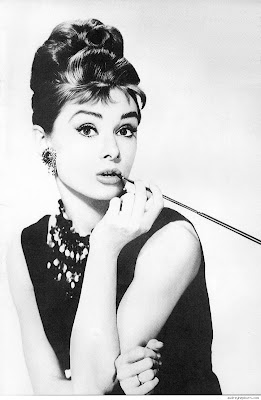Where The Girls Are: Growing up female with the mass media. Susan J. Douglas, Published by the Penguin Group, first published in the USA by Times Books, a division of Random House 1994, Printed in England by Clays Ltd, St. Ives plc.
The first book I looked at was Where The Girls Are by Susan J. Douglas. Douglas talks about how Jacqueline Kennedy redefined feminity for the baby boom. She has feet half the size of Cinderella's, therefore isnt the typical Disney perfect woman. Kennedy knew more languages than her husband yet was a leading lady in fashion in her time. Douglas also talks about Holly Golightly played by Audrey Hepburn in Breakfast at Tiffany's. Holly Golightly had a distain for marriage and was flat chested yet was at the height of glamour in the early 1960's. Another point Douglas intrested me in was the first major feminists demonstration for women's liberation at the 1968 Miss American Pageant. The press called them "bra-less bubble heads" but the women were trying to make a valuable point that pagents make the woman nothing more than a piece of meat. Woman around the country responded in mases and increased the woman's organisation by four hundred fold. These are all woman that have changed history for the better and made the life for women better. Woman that have always been at the height of fashion and have always been in the media become role models for lots of people.
Consuming Cultures, Globalization and Local Lives, Jeremy Seabrook, New Internationalist Publications Ltd. First published in the UK, Patents Act 1988 Jeremy Seabrook 2004.
Seabrook talks about the threat to cultural diveristy and identity around the world including the Western world. The media: mainly films are making all cultures trying to be more like the western world therefore ruining cultural boundries, languages and customs. Local cultures are being destroyed. Seabrook talks about the fight between local and global. This realates heavily to designers as they are the desirable and are clearly a symbol of western culture, luxury and glamour. McDonalds serves around 50 million people a day in 119 countries.
The Sage Dictionary of Cultural Studies. Chris Barker, 2004, Sage Publications Ltd London 2004.
Looking up the word Style in the Dictionary, Barker brings up some intresting points about how the idea of style was "constituted by the signifying practices of youth subcultures, including the diplay of codes of meaning achieved via the transformation of commodities as cultural signs". Style identifies your beliefs and and identity. Barker discribes how punk is a perfect example of this. Punk was a 'revolting style' using black rubbish bags and safety pins. It was responding to the crisis, Britain was going through the Thatcher rein and the lack of jobs and poverty was expressed in anger through their clothing. Punk was amazing as it created a youth culture that was completely created by people on the streets and then publisied by music and designers such as Vivienne Westwood and the Sex Pistols. Barker also goes on to mention the first 'skinheads' who were dressing to like the hard lives of the working class, wearing boots, jeans and braces. "Their style stressed the resources of working class collectivism and territoriality through the coherence and loyalty of 'the gang' of mates. Barker also argues that the consumerist culture has robbed stlyle of its fun and creativity to be flattened down to become a political qustion of need and money.






No comments:
Post a Comment